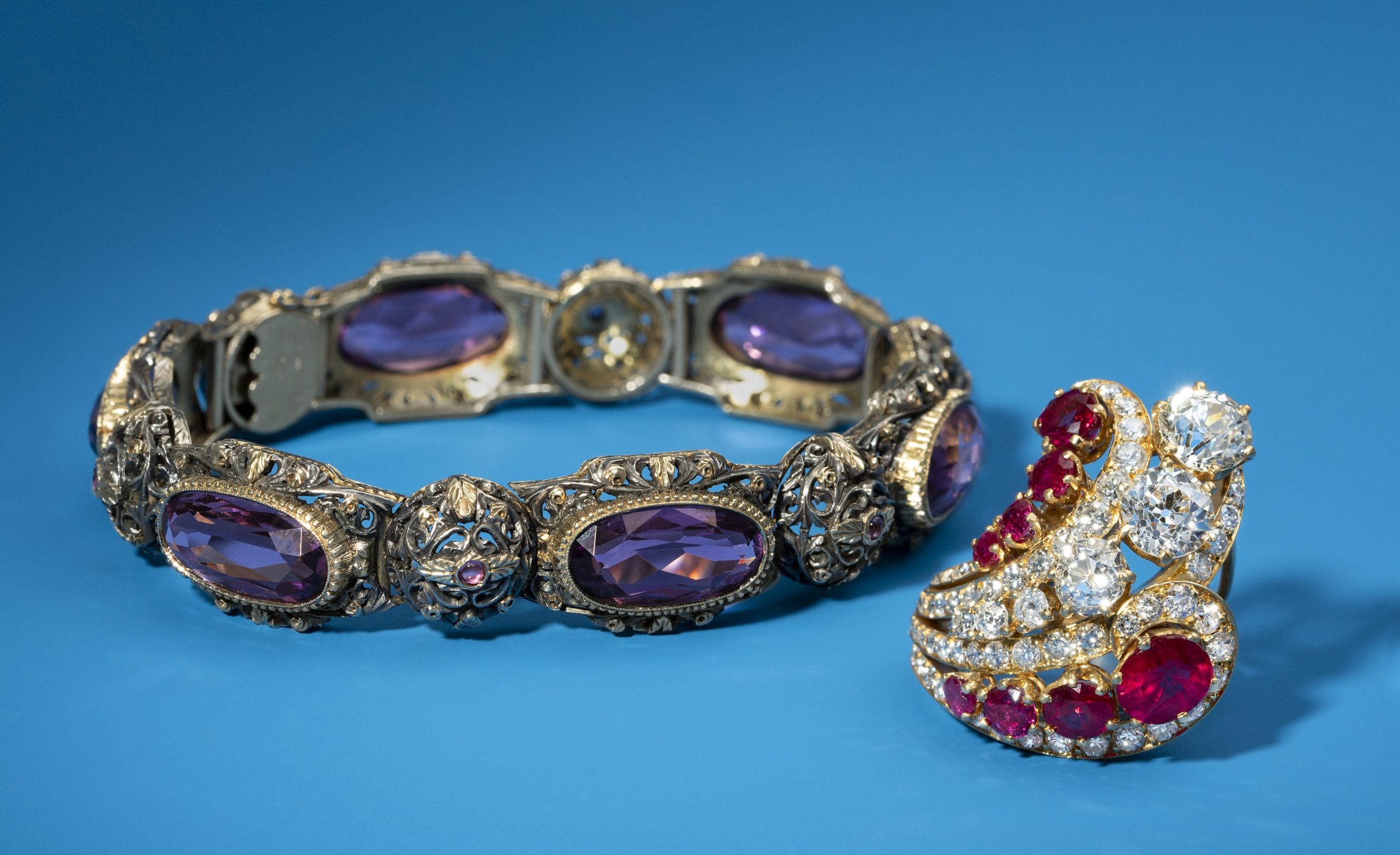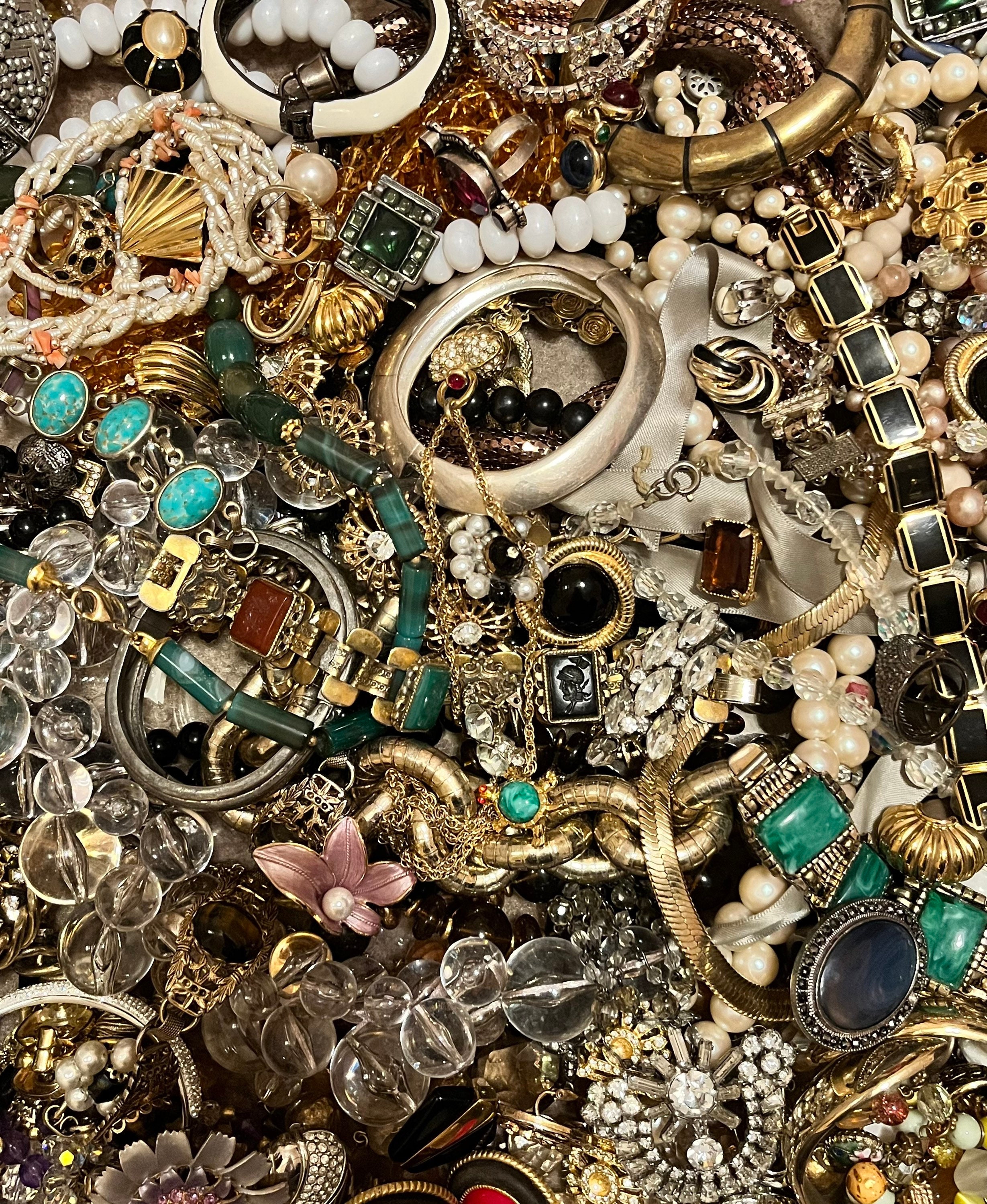Estate Jewelry Austin TX: Expert Tips for Shopping for Vintage Jewelry
Reveal the Rich History Behind Stunning Estate Jewelry Collections
The exploration of estate jewelry collections supplies a special window right into history, disclosing the detailed partnership in between craftsmanship and social evolution. What tricks might these collections still hold?
The Beginnings of Estate Precious Jewelry
How did estate precious jewelry involved symbolize the rich history and virtuosity of bygone ages? The beginnings of estate jewelry can be traced back to various periods of workmanship, where fashion jewelry was not simply a device however a reflection of social worths, technological developments, and artistic expressions. Each piece informs a tale, commonly connected with the lives of their previous owners, encapsulating individual narratives alongside historical contexts.
The term "estate jewelry" usually refers to pre-owned pieces, typically from substantial periods such as Victorian, Art Nouveau, or Art Deco. These items were produced with thorough interest to information, showcasing the skill of artisans that utilized products like gold, silver, and valuable gemstones. Unlike modern precious jewelry, estate items often include distinct layouts that highlight the aesthetics of their time, hence functioning as substantial links to the past.

Significant Style Eras
Throughout background, numerous notable style eras have substantially influenced the advancement of estate jewelry, each characterized by distinct designs, products, and cultural contexts. The Georgian period (1714-1837) marked the beginning of elaborate layouts, typically including nature-inspired motifs and using materials like gold, silver, and gems set in intricate setups. Following this, the Victorian era (1837-1901) introduced enchanting motifs, with emotional fashion jewelry and ingenious methods such as making use of enamel and cameos.
The Art Nouveau period (1890-1910) celebrated natural kinds and the appeal of nature, utilizing materials like opals and pearls in flowing styles. This was done well by the Art Deco era (1920-1939), which welcomed geometric patterns, strong shades, and elegant materials such as platinum and rubies, mirroring the modernist spirit of the moment.
The Mid-Century Modern age (1940-1960) showcased structured designs and making use of unusual materials, emphasizing minimalism and capability. Each of these periods not just mirrors the imaginative motions of their time but also envelops the societal worths and technical improvements that formed precious jewelry layout, making them a remarkable topic for collectors and historians alike.

Famous Estate Precious Jewelry Collections
The rich background of estate jewelry is beautifully exhibited by a number of prominent collections that display the artistry and workmanship from different style eras. One of one of the most popular is the Cartier Collection, which reflects the deluxe and innovation of the iconic French jewelry expert. Pieces from this collection usually feature exquisite gemstones and detailed Look At This layouts, highlighting the brand's dedication to great craftsmanship.
An additional significant collection is the Lady of Windsor's precious jewelry collection, which makes up several distinctive items, consisting of the iconic "Windsor" arm band. This collection not just exhibits the beauty of the Art Deco period however also brings a rich narrative of love and loss, as it belonged to Wallis Simpson, who famously wed Edward VIII.
The collection of the late starlet Elizabeth Taylor also stands apart in the realm next page of estate precious jewelry. With countless items designed by prominent jewelers like Bulgari and Cartier, her collection symbolizes beauty and elegance, emphasizing her personal style and affinity for one-of-a-kind gemstones.
These well-known estate precious jewelry collections work as a testament to the long-lasting allure of fine jewelry, offering understanding into the cultural and creative activities that formed their production.
The Cultural Relevance
Estate precious jewelry collections hold extensive cultural importance, reflecting not only the visual values of their corresponding eras but likewise the social and historic contexts in which they were developed. Each item often embodies the workmanship and imaginative patterns of its time, showcasing the evolution of layout and innovation in precious jewelry production.
Furthermore, these collections work as tangible links to social customs and routines. Wedding event bands and heirloom brooches might symbolize love and domestic bonds, while pieces embellished with particular gems can represent social or local identifications. The products utilized-- whether gold, silver, or gemstones-- often tell tales of profession, expedition, and the riches buildup of cultures.
Furthermore, estate precious jewelry can function as historic artifacts, offering understandings right into the lives of people and the societal norms they browsed. The method jewelry click this link was put on and valued can reveal much regarding sex duties, status, and individual expression within varying cultural landscapes. Therefore, estate jewelry transcends simple decoration, serving as a rich story of human experience, creativity, and social heritage, welcoming contemporary audiences to involve with the past in a significant means.
Taking Care Of Your Estate Parts
Caring for estate fashion jewelry pieces needs a thoughtful strategy to guarantee their durability and maintain their one-of-a-kind qualities. Always clean estate fashion jewelry making use of a soft, lint-free towel after each wear to get rid of oils and dust.
Storage space is equally vital; shop pieces individually in a fabric-lined box to stop damaging and entangling. Consider using anti-tarnish bags or cloths for silver items, as this assists to slow down the tainting procedure. Furthermore, prevent exposing precious jewelry to excessive wetness, extreme temperature levels, or direct sunshine, which can negatively impact steels and gemstones.
Consulting a jeweler experienced in vintage or antique items can give specialized treatment choices. By executing these practices, collection agencies can protect their estate fashion jewelry's historical and visual value, making certain these pieces continue to be treasured for generations to come.
Conclusion
In verdict, the exploration of estate fashion jewelry collections discloses a tapestry of artistic expression and cultural importance, reflecting the worths and looks of numerous historical durations. Each item functions as a testament to phenomenal craftsmanship and the stories of those that when owned them. Understanding the origins, design eras, and notable collections improves recognition for these artifacts, emphasizing their function in protecting cultural heritage and motivating continued stewardship and treatment for these amazing treasures.
The expedition of estate precious jewelry collections offers an unique home window right into background, disclosing the complex connection between craftsmanship and cultural evolution. The beginnings of estate jewelry can be traced back to numerous durations of workmanship, where precious jewelry was not just an accessory yet a representation of societal values, technological innovations, and artistic expressions.The term "estate precious jewelry" generally refers to secondhand pieces, often from significant ages such as Victorian, Art Nouveau, or Art Deco.The abundant history of estate jewelry is perfectly exhibited by several renowned collections that display the virtuosity and craftsmanship from different design periods.In verdict, the expedition of estate jewelry collections exposes a tapestry of creative expression and social importance, reflecting the values and aesthetic appeals of different historic durations.